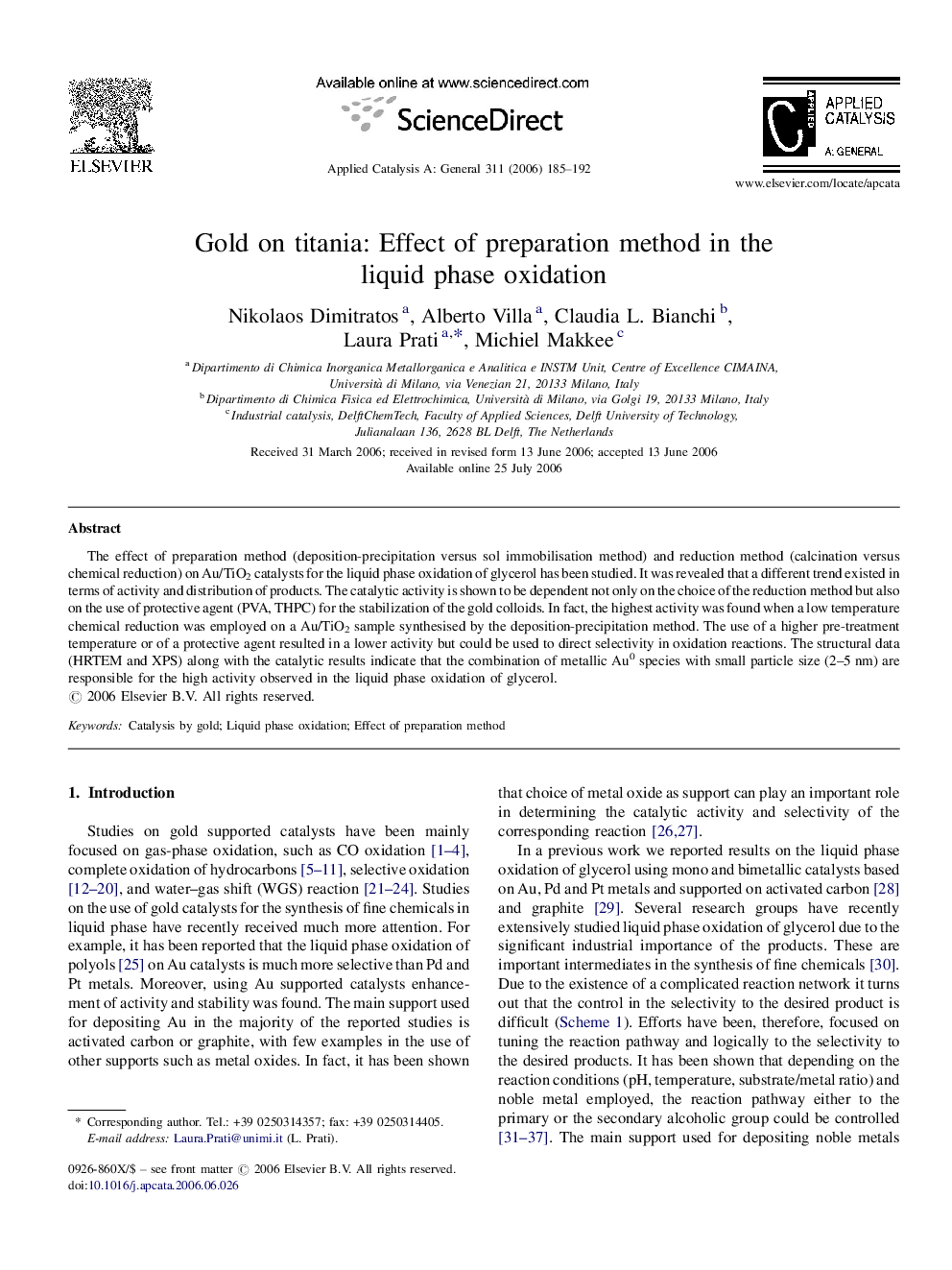| Article ID | Journal | Published Year | Pages | File Type |
|---|---|---|---|---|
| 44662 | Applied Catalysis A: General | 2006 | 8 Pages |
The effect of preparation method (deposition-precipitation versus sol immobilisation method) and reduction method (calcination versus chemical reduction) on Au/TiO2 catalysts for the liquid phase oxidation of glycerol has been studied. It was revealed that a different trend existed in terms of activity and distribution of products. The catalytic activity is shown to be dependent not only on the choice of the reduction method but also on the use of protective agent (PVA, THPC) for the stabilization of the gold colloids. In fact, the highest activity was found when a low temperature chemical reduction was employed on a Au/TiO2 sample synthesised by the deposition-precipitation method. The use of a higher pre-treatment temperature or of a protective agent resulted in a lower activity but could be used to direct selectivity in oxidation reactions. The structural data (HRTEM and XPS) along with the catalytic results indicate that the combination of metallic Au0 species with small particle size (2–5 nm) are responsible for the high activity observed in the liquid phase oxidation of glycerol.
